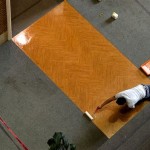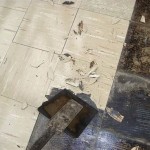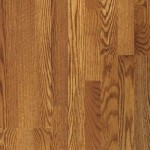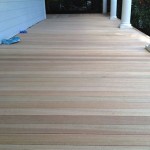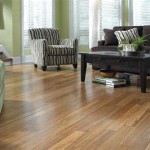How To Clean LVT Flooring: A Comprehensive Guide
Luxury Vinyl Tile (LVT) flooring has gained immense popularity due to its durability, versatility, and aesthetic appeal. Mimicking the look of natural materials like wood, stone, and ceramic tile, LVT offers a cost-effective and practical flooring solution for various residential and commercial spaces. However, like any flooring material, LVT requires proper cleaning and maintenance to preserve its beauty and extend its lifespan. This article provides a comprehensive guide on how to effectively clean LVT flooring, ensuring a pristine and long-lasting surface.
Understanding the composition of LVT is crucial for selecting appropriate cleaning methods. LVT typically consists of multiple layers, including a backing layer, a core layer, a print film layer that provides the desired aesthetic, and a protective wear layer. This wear layer is particularly important, as it shields the flooring from scratches, stains, and everyday wear and tear. Damage to this layer can compromise the floor's appearance and longevity. Therefore, cleaning methods should be gentle yet effective in removing dirt and grime without harming the protective wear layer.
Regular Cleaning Practices
Consistent cleaning practices are essential for preventing the buildup of dirt, dust, and debris on LVT flooring. Establishing a regular cleaning routine minimizes the need for harsh chemicals and intensive cleaning procedures. Regular cleaning primarily involves sweeping, vacuuming, and damp mopping.
Sweeping: Sweeping should be performed regularly, ideally daily in high-traffic areas and at least a few times a week in less frequented spaces. Use a soft-bristled broom to avoid scratching the LVT surface. Pay particular attention to corners and edges where dirt and debris tend to accumulate.
Vacuuming: Vacuuming is an effective method for removing loose dirt, dust, and pet hair from LVT flooring. Employ a vacuum cleaner with a soft brush attachment to prevent scratching the surface. Avoid using vacuums with beater bars, as these can damage the wear layer over time. Ensure the vacuum cleaner's wheels are clean to prevent leaving marks on the floor.
Damp Mopping: Damp mopping is crucial for removing surface stains and grime. Use a microfiber mop, as it is gentle on the LVT surface and effectively traps dirt and debris. Avoid using excessive water, as this can seep into the seams and potentially damage the subfloor. Wring out the mop thoroughly before use, ensuring it is damp rather than wet. Change the mop water frequently to prevent spreading dirty water across the floor.
For regular damp mopping, a mild cleaning solution is usually sufficient. Mix a few drops of pH-neutral floor cleaner specifically designed for vinyl flooring with warm water. Avoid using harsh chemicals, abrasive cleaners, or solvents, as these can damage the wear layer and dull the floor's finish. Always follow the manufacturer's recommendations for cleaning LVT flooring.
Deep Cleaning Techniques
In addition to regular cleaning, LVT flooring requires periodic deep cleaning to remove stubborn stains, buildup, and embedded dirt. Deep cleaning involves more intensive methods and may require specialized cleaning solutions. The frequency of deep cleaning depends on the amount of traffic the floor receives and the type of soiling it is exposed to.
Choosing the Right Cleaning Solution: Selecting the appropriate cleaning solution is paramount for effective deep cleaning. Avoid using products containing harsh chemicals such as bleach, ammonia, or solvents. These chemicals can damage the wear layer and discolor the LVT surface. Opt for pH-neutral floor cleaners specifically formulated for vinyl flooring. Enzyme-based cleaners can effectively break down organic stains and odors. Always test the cleaning solution in an inconspicuous area before applying it to the entire floor to ensure it does not cause any discoloration or damage.
Applying the Cleaning Solution: Dilute the cleaning solution according to the manufacturer's instructions. Apply the solution to the floor using a microfiber mop or a sponge. Allow the solution to dwell on the surface for a few minutes to loosen stubborn stains and buildup. Avoid letting the solution dry on the floor, as this can leave a residue.
Scrubbing the Floor: For heavily soiled areas, gently scrub the floor with a soft-bristled brush or a non-abrasive scrubbing pad. Avoid using excessive force, as this can scratch the LVT surface. Pay particular attention to areas around doorways, in kitchens, and in bathrooms, where dirt and grime tend to accumulate.
Rinsing and Drying: After scrubbing the floor, rinse it thoroughly with clean water. Use a microfiber mop to remove all traces of the cleaning solution. Ensure that no soapy residue remains on the surface, as this can attract dirt and leave the floor looking dull. Dry the floor with a clean, dry microfiber mop or towel. Proper drying prevents water spots and helps maintain the floor's shine.
Steam Cleaning: Steam cleaning can be an effective method for deep cleaning LVT flooring, as it uses hot steam to loosen dirt and grime without the need for harsh chemicals. However, it's crucial to ensure the steam cleaner is specifically designed for use on vinyl flooring. Use a low-pressure setting and keep the steam cleaner moving constantly to prevent overheating the LVT surface. Excessive heat can damage the adhesive and cause the tiles to warp or peel. Always consult the manufacturer's recommendations before using a steam cleaner on LVT flooring.
Addressing Specific Stains and Scuffs
While regular and deep cleaning can address most general soiling, LVT flooring may occasionally be subjected to specific stains and scuffs that require targeted treatment. Promptly addressing spills and stains can prevent them from becoming permanent.
Food and Beverage Stains: Spills from food and beverages, such as coffee, juice, or wine, should be cleaned up immediately. Use a clean cloth or paper towel to blot the spill, working from the outside towards the center to prevent it from spreading. For stubborn stains, mix a solution of warm water and a mild dish soap. Apply the solution to the stain, let it sit for a few minutes, and then blot it up with a clean cloth. Rinse the area with clean water and dry it thoroughly.
Grease and Oil Stains: Grease and oil stains can be particularly challenging to remove from LVT flooring. Sprinkle baking soda or cornstarch on the stain to absorb the grease. Let it sit for several hours or overnight. Vacuum up the powder and then clean the area with a mixture of warm water and dish soap. Rinse and dry thoroughly.
Ink Stains: Ink stains can be removed with rubbing alcohol. Apply a small amount of rubbing alcohol to a clean cloth and gently blot the stain. Avoid rubbing vigorously, as this can spread the ink. Rinse the area with clean water and dry it thoroughly.
Scuff Marks: Scuff marks can often be removed with a magic eraser or a soft, damp cloth. Gently rub the scuff mark until it disappears. Avoid using excessive pressure, as this can damage the wear layer. For stubborn scuff marks, try using a small amount of WD-40 on a clean cloth. Apply the WD-40 to the scuff mark, let it sit for a few minutes, and then wipe it away with a clean cloth. Rinse the area with warm water and dish soap to remove any residue.
Preventative Measures: Implementing preventative measures can significantly reduce the frequency and severity of stains and scuffs on LVT flooring. Place doormats at entrances to trap dirt and debris before they are tracked onto the floor. Use furniture pads under the legs of chairs and tables to prevent scratching the surface. Avoid wearing shoes with high heels or rough soles on LVT flooring. Promptly clean up spills and stains to prevent them from setting in.
Regular cleaning and proper maintenance are essential for preserving the beauty and extending the lifespan of LVT flooring. By following the guidelines outlined in this article, one can effectively clean LVT flooring and maintain a pristine and attractive surface for years to come. The key is to establish a consistent cleaning routine, use appropriate cleaning solutions, and address stains and scuffs promptly. These practices contribute to the longevity and aesthetic appeal of LVT flooring in any setting.

Vinyl Plank Flooring Sandless In Seattle

How To Clean Lvt Luxury Vinyl Tile Flooring

How To Clean Vinyl Floors

How To Clean Lvt Luxury Vinyl Flooring In 6 Steps Imperial Dade

How To Clean Luxury Vinyl Plank Flooring Lvp Pro Cleaning Tips

Care Guide For Lvt Luxury Vinyl Flooring Advice And Tips

How To Clean Luxury Vinyl Wood Flooring Which Cleaners Are Safe

How To Clean Vinyl Floors A Janitor S Story Com

Luxury Vinyl Care Cleaning Tips More Flooring101 In Simi Valley Ca

How To Clean Commercial Tile Vct And Carpet Spectra Contract Flooring
Related Posts

